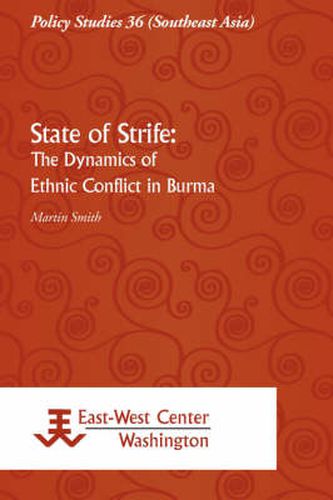Readings Newsletter
Become a Readings Member to make your shopping experience even easier.
Sign in or sign up for free!
You’re not far away from qualifying for FREE standard shipping within Australia
You’ve qualified for FREE standard shipping within Australia
The cart is loading…






This title is printed to order. This book may have been self-published. If so, we cannot guarantee the quality of the content. In the main most books will have gone through the editing process however some may not. We therefore suggest that you be aware of this before ordering this book. If in doubt check either the author or publisher’s details as we are unable to accept any returns unless they are faulty. Please contact us if you have any questions.
Since independence in 1948, Burma has been the scene of some of the most-sustained and diverse ethnic insurgencies in the contemporary world. This study examines the dynamics of conflict that have caused internal wars to become so uniquely entrenched in one of Asia’s most troubled lands. Against a backdrop of conflict, different nationality movements have been able to adapt and survive, utilizing the changing political, economic, and international conditions in the country. In the process, armed opposition became a way of life in the borderlands, while the central state became increasingly militarized. Burma’s conflicts, however, have not been static. This study identifies five major cycles of conflict that have seen the national government transform from a parliamentary democracy at independence through Gen. Ne Win’s Burmese Way to Socialism to the current military State Peace and Development Council. As the political impasse continues, ethnic ceasefires and open-door economic policies are changing the structures of conflict. In an overview of humanitarian and international dilemmas, the study concludes that conflict resolution - with integrated support from the international community - remains a primary need if Burma and its peoples are to achieve peace, democracy, and a stable nation-state.
$9.00 standard shipping within Australia
FREE standard shipping within Australia for orders over $100.00
Express & International shipping calculated at checkout
This title is printed to order. This book may have been self-published. If so, we cannot guarantee the quality of the content. In the main most books will have gone through the editing process however some may not. We therefore suggest that you be aware of this before ordering this book. If in doubt check either the author or publisher’s details as we are unable to accept any returns unless they are faulty. Please contact us if you have any questions.
Since independence in 1948, Burma has been the scene of some of the most-sustained and diverse ethnic insurgencies in the contemporary world. This study examines the dynamics of conflict that have caused internal wars to become so uniquely entrenched in one of Asia’s most troubled lands. Against a backdrop of conflict, different nationality movements have been able to adapt and survive, utilizing the changing political, economic, and international conditions in the country. In the process, armed opposition became a way of life in the borderlands, while the central state became increasingly militarized. Burma’s conflicts, however, have not been static. This study identifies five major cycles of conflict that have seen the national government transform from a parliamentary democracy at independence through Gen. Ne Win’s Burmese Way to Socialism to the current military State Peace and Development Council. As the political impasse continues, ethnic ceasefires and open-door economic policies are changing the structures of conflict. In an overview of humanitarian and international dilemmas, the study concludes that conflict resolution - with integrated support from the international community - remains a primary need if Burma and its peoples are to achieve peace, democracy, and a stable nation-state.